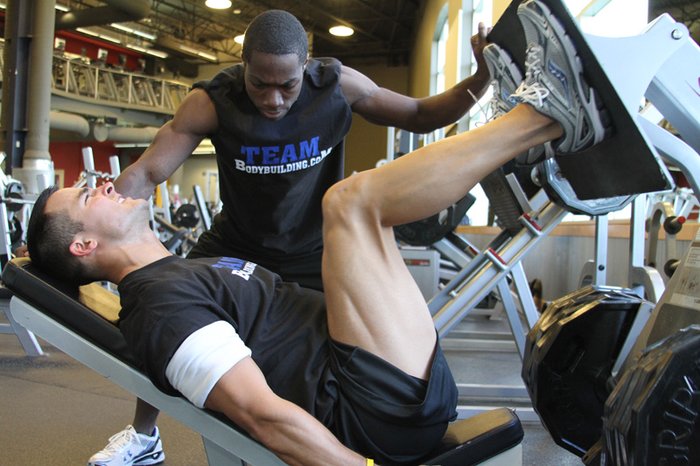Exercise Daily – Are you stuck in your strength training journey, particularly with your bench press? It’s a frustrating but common experience to hit a plateau in your progress, but fear not—there are effective strategies to help you break through and keep making gains. This guide delves into five proven methods to overcome the dreaded fitness plateau and continue moving toward your goals.
Firstly, consider incorporating tempo training into your routine. By adjusting the pace at which you perform each rep and focusing on controlling both the eccentric and concentric phases, you can stimulate new muscle growth and enhance strength gains. Additionally, emphasizing the full range of motion during each repetition, rather than resorting to half reps, will help activate more muscle fibers and promote balanced muscle development.
Understanding the Plateau
What is a Plateau?
Before we dive into the strategies to overcome a plateau, let’s first understand what a plateau means. A plateau is a period during training when you seem to hit a wall and progress stops. It’s that frustrating phase where, no matter how hard you try, you can’t seem to increase the weight you’re lifting or improve your performance.
Why Do Plateaus Happen?
Plateaus can happen for various reasons. One common cause is the lack of progressive overload. Your body gets used to the same stimulus, and the initial gains slow. Additionally, overtraining or not allowing sufficient time for recovery can also lead to plateaus. Other factors like poor nutrition, inadequate sleep, and lack of variation in your training routine can contribute to hitting a plateau.

Assess Your Current Plan
Evaluating your current training program is essential before diving into the strategies to overcome a strength training plateau. Take a step back and analyze your routine. Are you following a structured plan? Are you incorporating a variety of exercises that target different muscle groups? Assessing your current plan will give you a clear understanding of what’s working and what needs improvement. This evaluation will serve as a solid foundation for implementing the following strategies effectively.
Implement Progressive Overload
One of the primary reasons for hitting a plateau is the lack of progressive overload in your training sessions. Progressive overload means gradually increasing the demands placed on your muscles over time. To break through the plateau, you need to challenge your body by increasing your exercises’ weight, repetitions, or intensity. Progressive overload stimulates growth and promotes strength gains by providing a consistent stimulus and forcing your muscles to adapt. So, ensure you’re constantly pushing yourself and striving for incremental improvements in each training session.
Vary Your Training Methods
If you’ve been stuck on the same weight or routine for weeks, it may be time to shake things up. Your body adapts to repetitive movements, leading to diminished returns. To overcome this, introduce new exercises, techniques, or training modalities into your routine. For example, incorporate interval training, time under tension exercises, or deload weeks to give your body a chance to recover and prevent burnout. Adding variety and constantly challenging your muscles in different ways will stimulate new growth and push past your plateau.
Strategies to Break Through the Plateau
Implement Progressive Overload
Implementing progressive overload is one of the most effective ways to break through a strength training plateau. This means gradually increasing the demands placed on your muscles over time. You can achieve progressive overload by increasing the weight lifted, the number of repetitions performed, or the training volume.
Vary Your Training Program
If you’ve been following the same training program for a while, it may be time to switch things up. Your body adapts to the stressors you place on it, so introducing new exercises, training techniques, or workout formats can help you break through the plateau. Incorporate different planes of motion into your routine, such as frontal and transverse movements, to challenge your body in new ways.
Focus on Time Under Tension
Time under tension refers to the duration of each repetition during your strength training exercises. By slowing down the tempo and spending more time on each movement’s eccentric and concentric phases, you can increase the intensity and challenge your muscles differently. This technique can help you overcome the strength training plateau and stimulate further muscle growth.
Take a Deload Week
Sometimes, your body may need a break to recover and supercompensate. Incorporating a deload week into your training program can provide the necessary rest to rejuvenate your body and mind. During a deload week, reduce the intensity and volume of your workouts while focusing on active recovery, mobility training, and techniques that promote relaxation.
Analyze Your Diet and Recovery
Factors beyond your training routine can influence Plateaus. Take a closer look at your diet and ensure you provide your body with the necessary nutrients and fuel to support your training. Additionally, prioritize adequate sleep as it plays a crucial role in recovery and muscle growth. Aim for 7-9 hours of quality sleep each night to optimize your progress and break through the plateau.
Create a Home Gym and Embrace Plateau-Busting Tools
If you are stuck on a plateau due to limited access to a commercial gym, consider creating a home gym. Investing in a few critical pieces of equipment like resistance bands, dumbbells, or a weightlifting bar can provide the necessary tools to continue progressing even when external circumstances are challenging. Embrace these plateau-busting tools and incorporate them into your training routine.

Focus on the Full Range of Motion
When it comes to building strength and muscle, the range of motion plays a crucial role. Many lifters tend to cheat on their form, compromising the effectiveness of their exercises. To ensure optimal results, focus on performing each repetition with a full range of motion. This means going through the complete movement pattern and engaging the target muscle group fully. By emphasizing proper form and range of motion, you’ll recruit more muscle fibres and maximize the benefits of each exercise.
Prioritize Recovery and Rest
Sometimes, the key to breaking through a strength training plateau is giving your body enough time to recover and repair. Overtraining can lead to a plateau and even increase the risk of injury. Make sure to prioritize rest and recovery days in your training program. Incorporate active recovery exercises, such as mobility training or low-intensity cardio, to promote blood flow and aid in muscle repair. Additionally, don’t underestimate the importance of sleep. Aim for at least seven to nine hours of quality sleep each night to optimize your body’s recovery processes.
Look at Your Diet
While exercise is crucial for breaking through plateaus, your diet also plays a significant role. You may hinder your progress if you’re not fueling your body with the right nutrients. Take a close look at your diet and ensure you consume enough calories and macronutrients to support your training goals. Make sure to get an adequate amount of protein to facilitate muscle repair and growth. Additionally, consider incorporating nutrient-dense foods and staying hydrated to optimize your performance and recovery.
Conclusion
Hitting a plateau in your strength training journey can be frustrating, but it doesn’t mean you must stay stuck. By implementing the abovementioned strategies, you can break through the strength training plateau and continue progressing towards your fitness goals. Plateaus are a natural part of the process, providing growth and improvement opportunities. Celebrate how far you’ve come and embrace the challenge of overcoming plateaus to become a more robust, fitter version of yourself.
FAQs – Overcoming Training Plateaus: How to Keep Progressing
Q: How long does a strength training plateau typically last?
A: Plateaus can vary in duration depending on various factors, including your training history, genetics, and lifestyle. On average, a plateau can last anywhere from a few weeks to a few months. However, with the right strategies and mindset, you can overcome it and start progressing again.
Q: Can I still build muscle while on a plateau?
A: While building muscle during a plateau may be challenging, it’s not impossible. Implementing progressive overload, time under tension, and varying your training program can stimulate muscle growth and continue progressing even during a plateau.
Q: Is changing my training program necessary to break through a plateau?
A: Not necessarily. Sometimes, making minor adjustments or introducing new exercises can be enough to break through a plateau. It’s essential to assess your current plan and identify areas where you can improve or add variety. Small changes can often yield significant results.
Q: How do I know if I’m overtraining and it’s causing a plateau?
A: Overtraining can manifest in various ways, including decreased performance, chronic fatigue, increased susceptibility to illness, and difficulty recovering from workouts. If you suspect you may be overtraining, listening to your body, taking rest days when needed, and adjusting your training intensity and volume is essential.
Can aerobic exercise help in overcoming a strength training plateau?
Yes, incorporating aerobic exercise into your routine can be beneficial for overcoming a strength training plateau. Aerobic exercises like interval training can improve cardiovascular fitness, increase calorie burn, and enhance overall endurance, indirectly supporting your strength training efforts.





